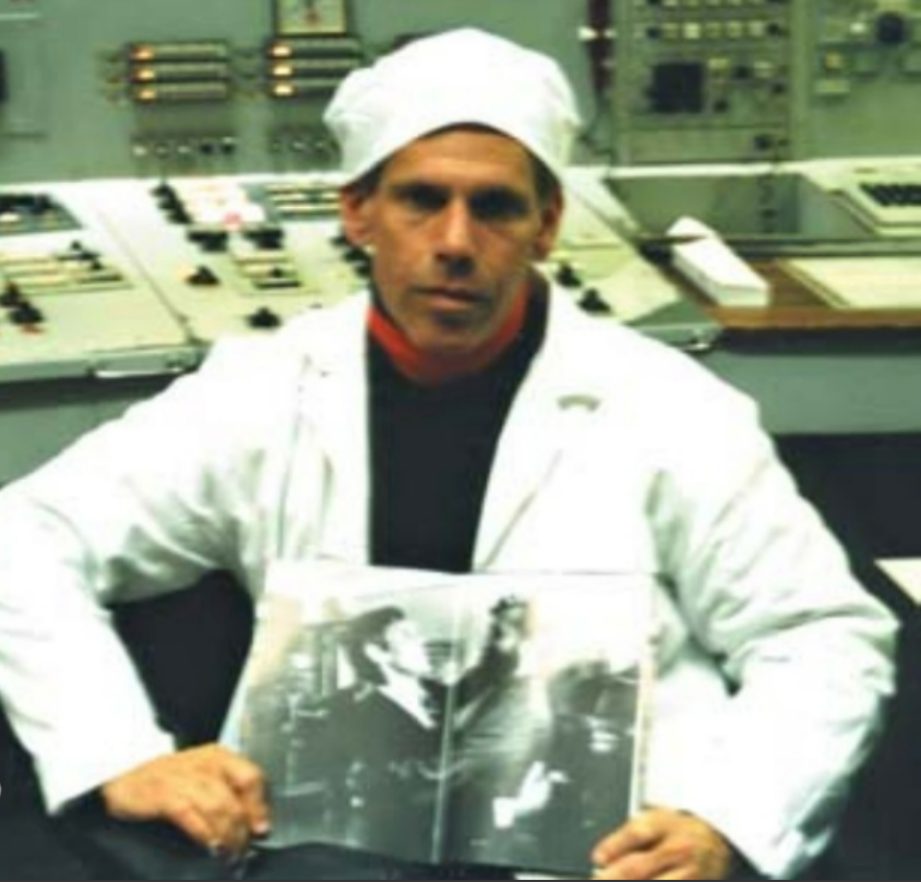Adam Higginbotham in his prize-winning Midnight in Chernobyl writes the following:
“At forty, Gale was a hematologist at the UCLA Medical Center and a specialist in bone marrow transplants… He was an ardent self-publicist who enjoyed his reputation as a maverick. He was also the committee chairman of the international research-sharing registry for bone marrow transplants and recognized that its resources might be vital in helping to save the lives of anyone struck by acute radiation syndrome. Gale knew that the USSR had already formally rejected offers of medical assistance from the US State Department, but he planned a different approach: through his friend and patron Armand Hammer. At around nine thirty that morning, he picked up the telephone… The chairman of American oil company Occidental Petroleum, Armand Hammer was a renowned philanthropist and art collector. Born in New York to committed Communists, he had first traveled to the USSR in 1921 after having broken off his medical studies, ostensibly to look after the Soviet interests of his father’s drug company. In Moscow, he met Lenin, who granted Hammer trade concessions that became the basis of a business fortune—and opened a direct line to Soviet leaders that would endure for almost seventy years. Although he would eventually be unmasked as one of history’s great charlatans—a knowing tool of the Soviet secret police, a con man, and a traitor—at eighty-seven, Hammer was still burnishing his reputation as a globe-trotting humanitarian, described by Walter Cronkite as “an almost unique bridge between Communism and capitalism.” Gale had met Hammer while visiting the USSR in 1978, to attend a medical conference at Moscow State University, and later got to know him well through Hammer’s initiative to find a cure for cancer. He could think of no better conduit for an offer of help to the casualties from Chornobyl. Gale tracked down Hammer at a hotel in Washington, DC, and explained the potential importance of bone marrow transplants in saving the victims of radiation exposure. Later that same day, Hammer addressed a letter to Mikhail Gorbachev, petitioning on Gale’s behalf, and delivered it by telex to the Kremlin. By Thursday afternoon, the doctor was striding through Los Angeles International Airport— tickets in hand and attended by a retinue of press photographers—on his way to Moscow…
Within the first twelve days after the accident, Alexander Baranov and Robert Gale conducted fourteen bone marrow operations, and Armand Hammer and the Sandoz Corporation arranged for hundreds of thousands of dollars’ worth of medicines and equipment to be air-freighted into Moscow from the West; Gale received Soviet approval to bring in more colleagues from New York and Los Angeles. But the doctors knew that much of their effort was probably futile: afterward, Gale announced at a press conference in Moscow that as many as three-quarters of their transplant patients would probably die.
Of the thirteen patients who had been treated with bone marrow transplants by Robert Gale and the Soviet specialists, all but one had died—so many that Angeline Guskova would eventually dismiss the technique as useless for managing ARS.”
In 1988, the Los Angeles Times published an article Chernobyl ‘Hero’: Dr. Gale–Medical Maverick, and below are a couple of excerpts from it:
“… there is something about the Chernobyl effort that is not mentioned in Gale’s book nor in the numerous interviews he has given since the summer of 1986. According to documents recently obtained by The Times, Gale designed and helped carry out experimental treatments on at least three Soviet citizens with a genetically engineered drug that had never before been tried on human subjects, nor approved for human testing…
Until July, 1986, he, along with some other UCLA researchers, also were under a 16-month order by the Food and Drug Administration to halt all use of experimental drugs from the National Cancer Institute after an investigation that uncovered a number of record-keeping and safety violations in connection with human drug trials…
In a report issued the summer after the Chernobyl accident, Soviet medical authorities concluded that the bone marrow transplants turned out to have little practical value and probably hastened the death of at least two patients. In future nuclear accidents, the Soviet doctors concluded, bone marrow transplants would benefit only a small number of patients exposed to a narrow range of radiation doses.”
